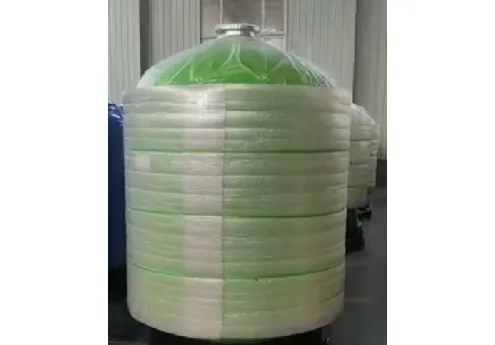loading...
- No. 9, Xingyuan South Street, Dongwaihuan Road, Zaoqiang County, Hengshui, Hebei, China
- admin@zjcomposites.com
- +86 15097380338
- Welcome to visit our website!
FRP Tank Water Filtration System for Efficient and Reliable Water Purification Solutions
FRP Tank Water Filter An Essential Component for Clean Water Supply
In today’s world, access to clean and safe drinking water is more critical than ever. With increasing industrialization and urbanization, the quality of our water sources is often compromised. Various contaminants, including heavy metals, sediments, and organic compounds, can infiltrate water systems, making water treatment more essential. One effective solution for ensuring the purity of water is the FRP (Fiber Reinforced Plastic) tank water filter.
FRP tanks are renowned for their strength, durability, and resistance to corrosion. These properties make FRP an ideal material for water filtration systems, particularly in harsh environments where traditional materials may fail. The primary function of an FRP tank water filter is to remove impurities from water, providing safe drinking water for both residential and industrial applications.
What are FRP Tanks?
FRP tanks are constructed using a composite material made of fiberglass and resin. This combination results in a lightweight yet strong tank that can withstand high pressures and temperatures. The manufacturing process of FRP involves layering fiberglass and resin, which cures to form a rigid structure with excellent structural integrity. These tanks can be molded into various shapes and sizes, making them versatile for different filtration systems.
Benefits of FRP Tank Water Filters
One of the key benefits of using FRP tank water filters is their resistance to corrosion. Unlike metal tanks that may rust or corrode when exposed to water and air, FRP tanks remain unaffected by these elements. This ensures a longer lifespan for the filtration system and reduces maintenance costs over time.
Another advantage is the light weight of FRP tanks. This feature simplifies installation and transportation compared to heavier materials. Additionally, FRP tanks can be designed to be pressure-rated, allowing them to handle high water pressures, which is vital for many filtration applications.
The Filtration Process
frp tank water filter

FRP tank water filters typically utilize multiple stages of filtration to ensure comprehensive purification. The process often begins with sediment filtration, where larger particles like sand, silt, and dirt are removed. This stage is crucial as it protects subsequent filtration systems from damage and clogging.
After sediment removal, the water may undergo activated carbon filtration. Activated carbon is highly effective in removing chlorine, volatile organic compounds (VOCs), and various odors. This step improves the taste and odor of the water, making it more palatable for consumers.
In some systems, additional filtration stages may include advanced techniques such as reverse osmosis or UV filtration, depending on the specific contaminants present in the water supply. The diversity of filtration options makes FRP tank systems adaptable to various water quality challenges.
Applications of FRP Tank Water Filters
FRP tank water filters are widely used in both residential and commercial applications. In homes, these systems provide families with safe drinking water, essential for health and well-being. In industries, such as food and beverage, pharmaceuticals, and electronics manufacturing, FRP tank filters ensure that process water meets stringent quality standards.
Moreover, FRP tanks are also employed in waste treatment plants, where they play a crucial role in purifying water before it is released back into the environment. Their ability to handle large volumes of water efficiently makes them indispensable in maintaining environmental safety.
Conclusion
The FRP tank water filter is a vital component in the quest for clean and safe water. With their unique advantages of durability, lightweight construction, and adaptability to various filtration needs, FRP tanks are becoming increasingly popular in water treatment solutions. As we continue to face challenges related to water quality and availability, embracing advanced filtration technologies, including FRP tank systems, is essential for safeguarding public health and the environment.
-
The Rise of FRP Profiles: Strong, Lightweight, and Built to LastNewsJul.14,2025
-
SMC Panel Tanks: A Modern Water Storage Solution for All EnvironmentsNewsJul.14,2025
-
GRP Grating: A Modern Solution for Safe and Durable Access SystemsNewsJul.14,2025
-
Galvanized Steel Water Tanks: Durable, Reliable, and Ready for UseNewsJul.14,2025
-
FRP Mini Mesh Grating: The Safer, Smarter Flooring SolutionNewsJul.14,2025
-
Exploring FRP Vessels: Durable Solutions for Modern Fluid HandlingNewsJul.14,2025
-
GRP Structures: The Future of Lightweight, High-Performance EngineeringNewsJun.20,2025
